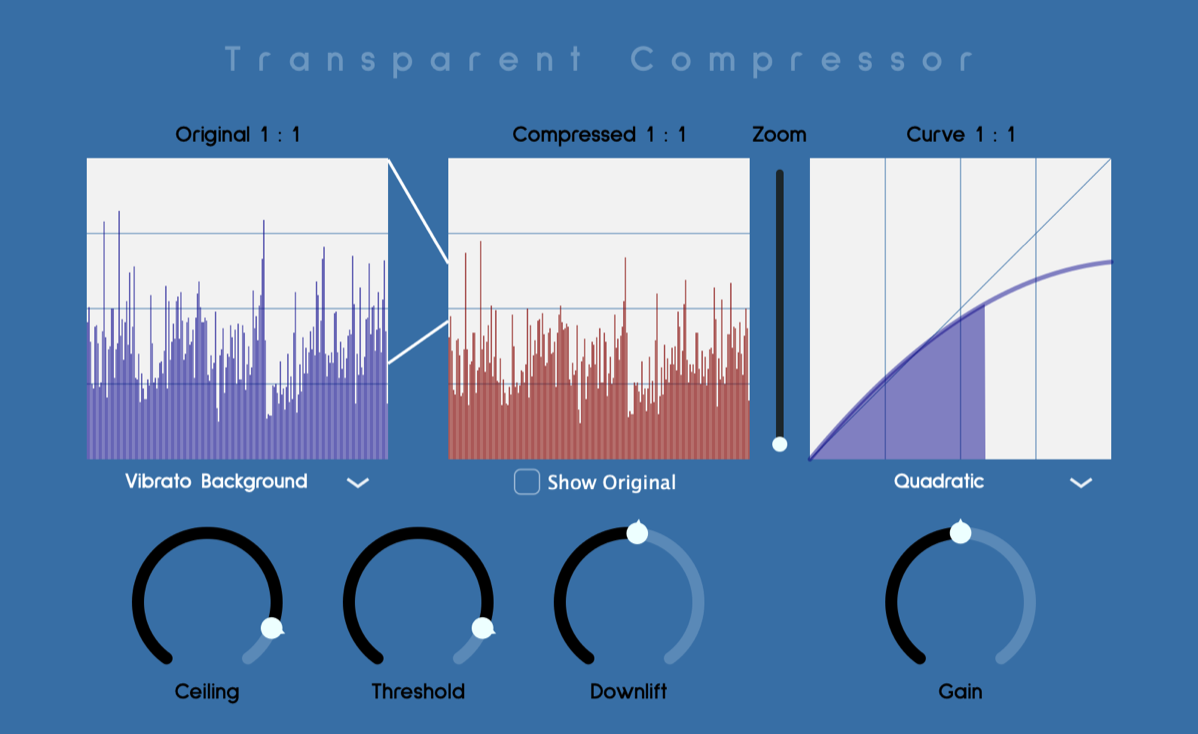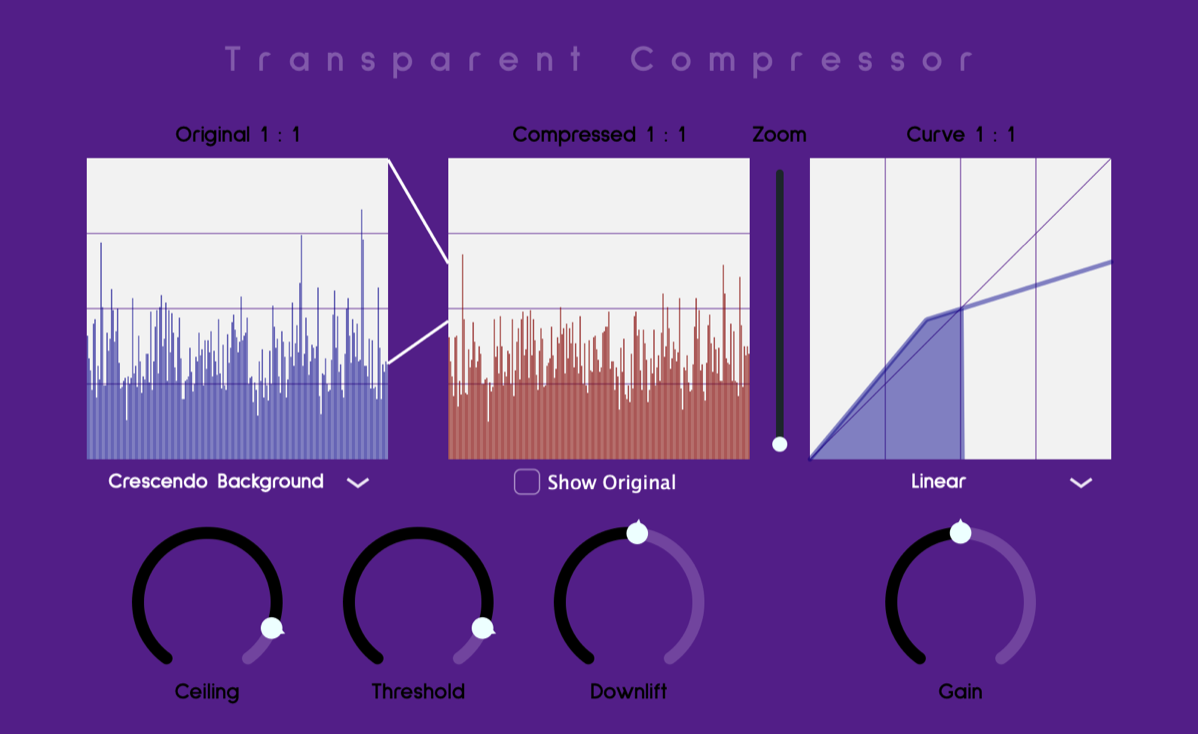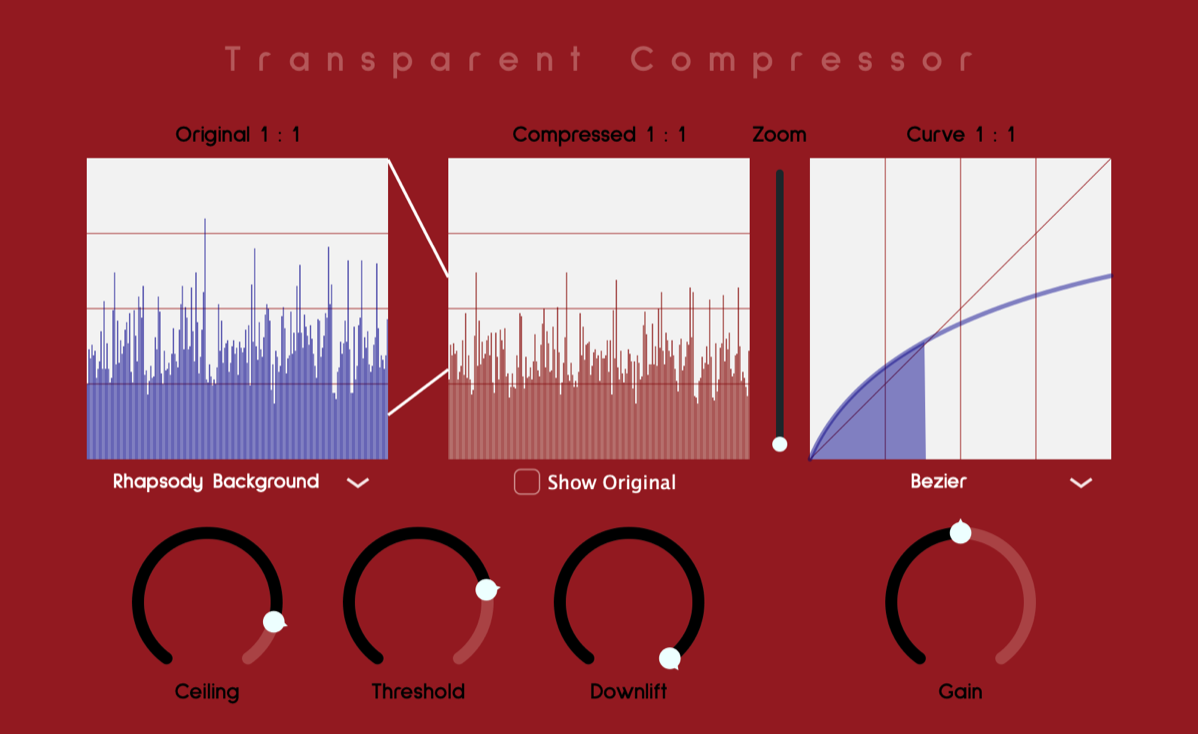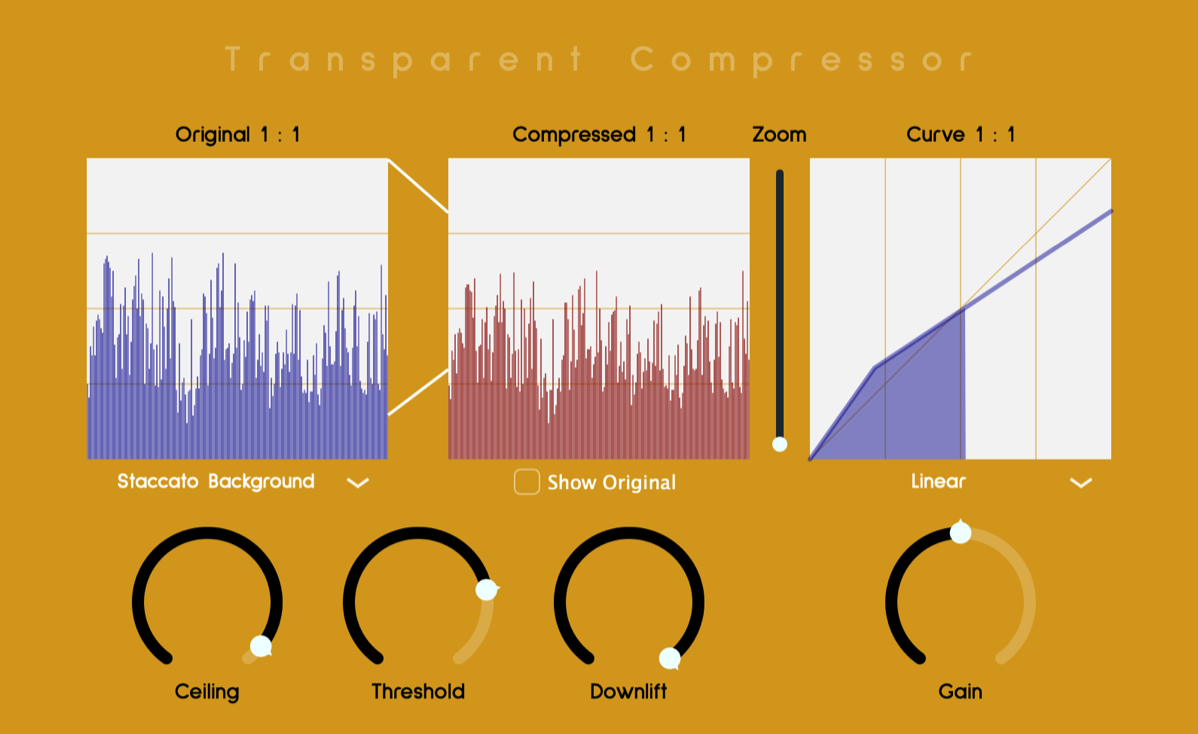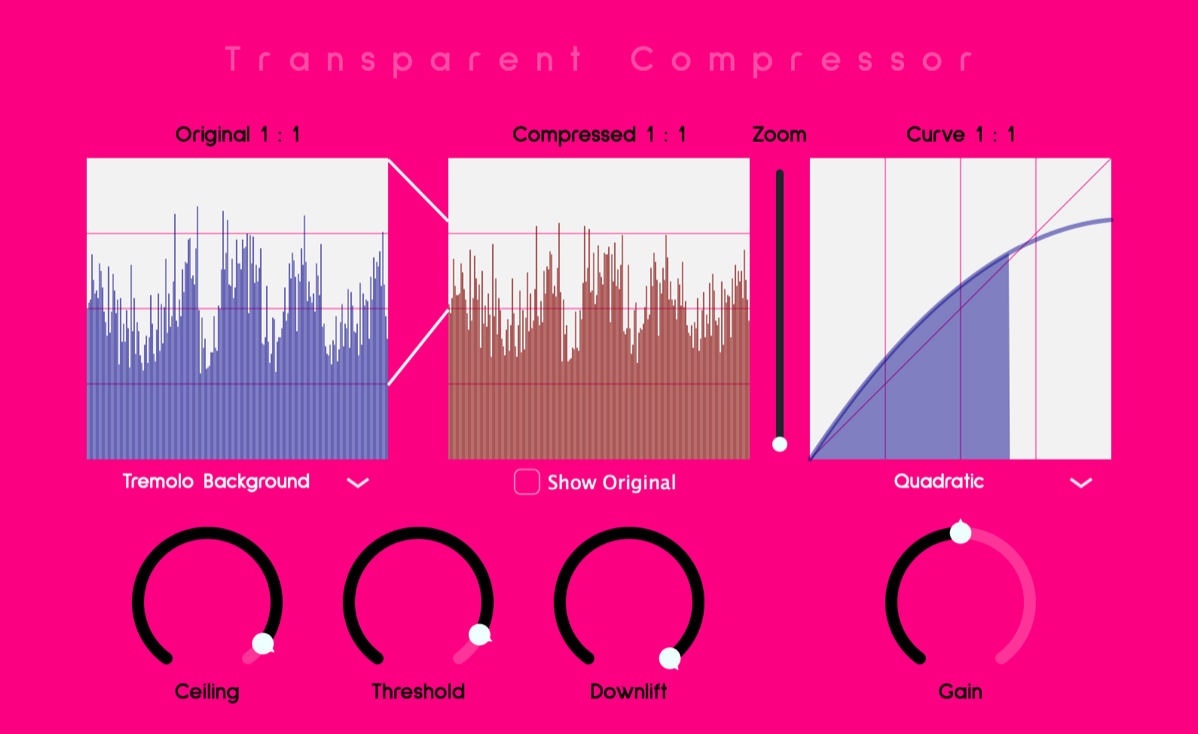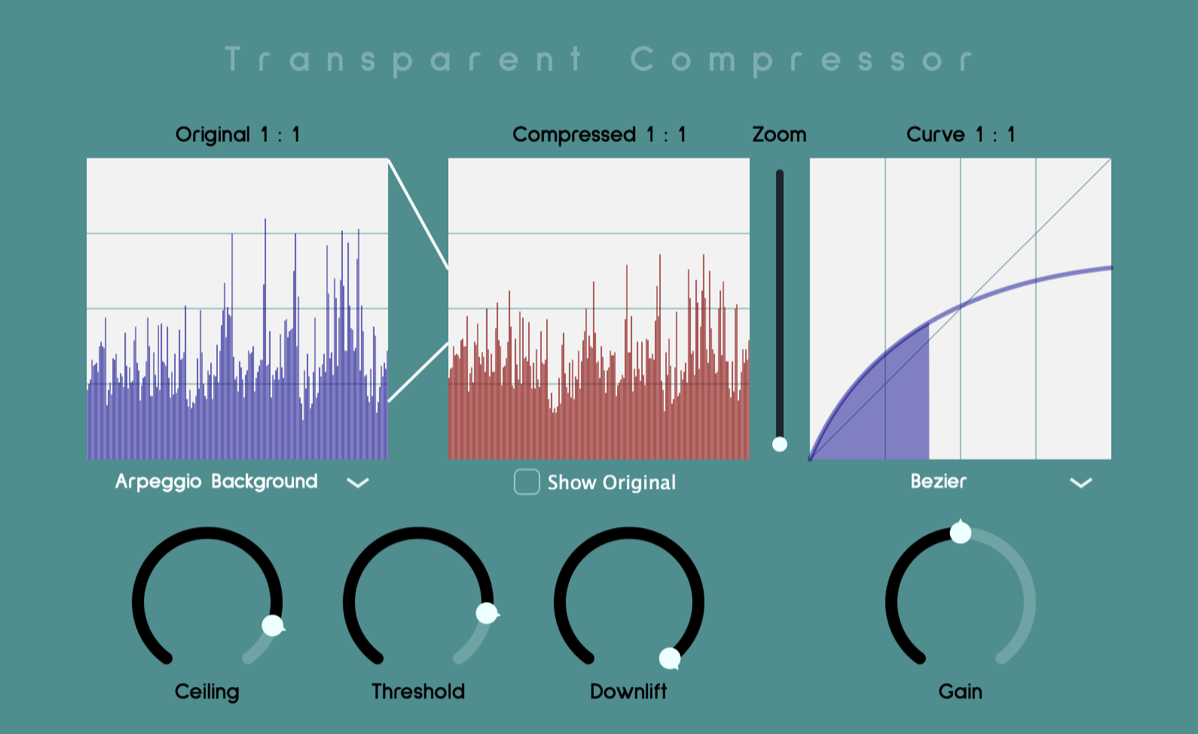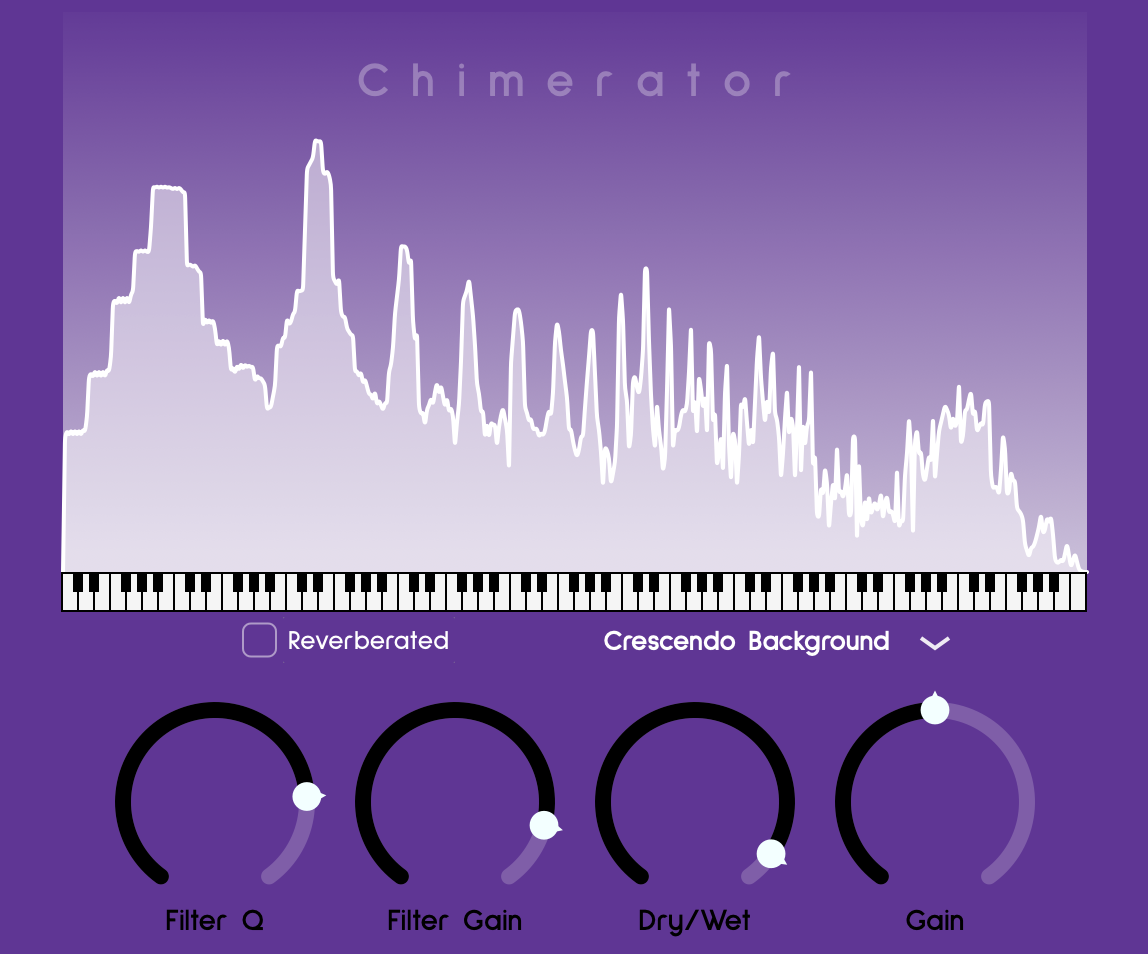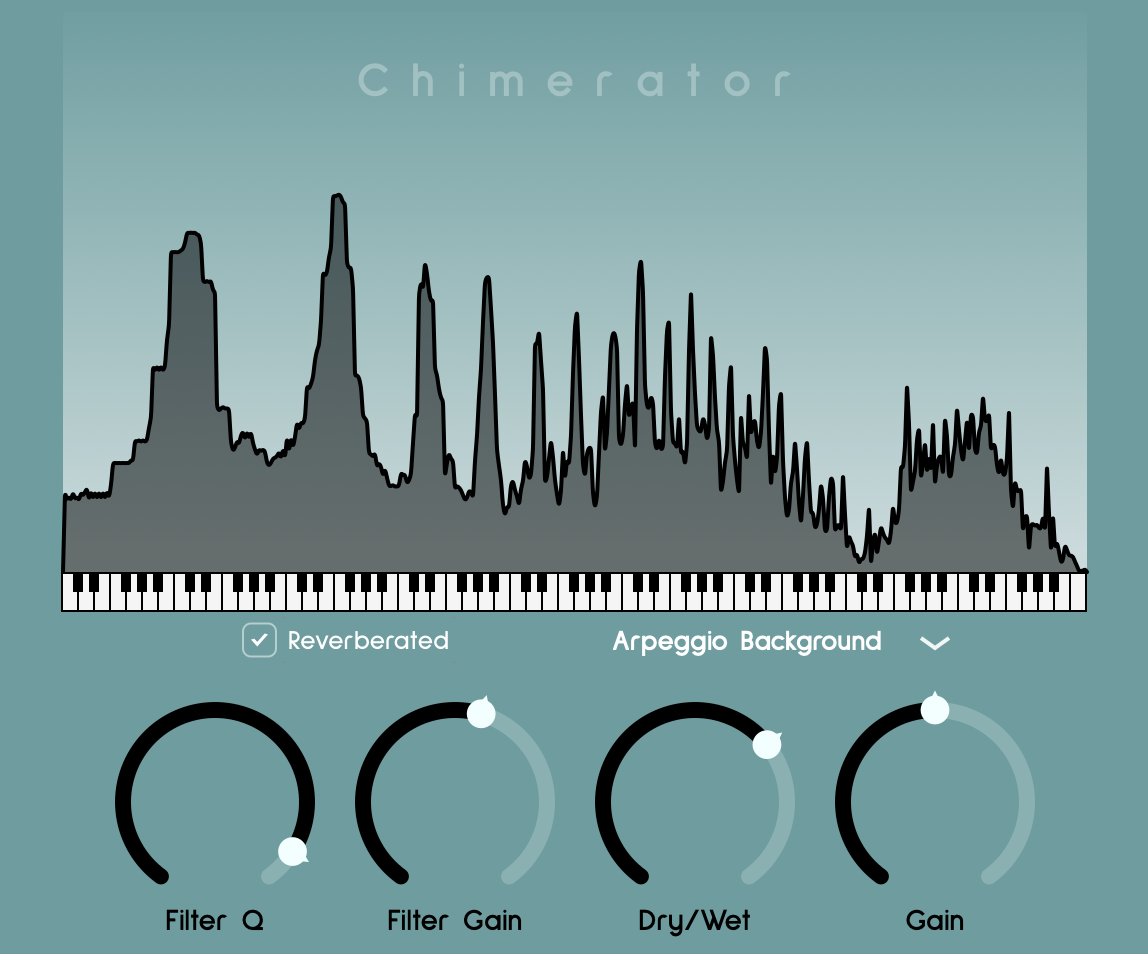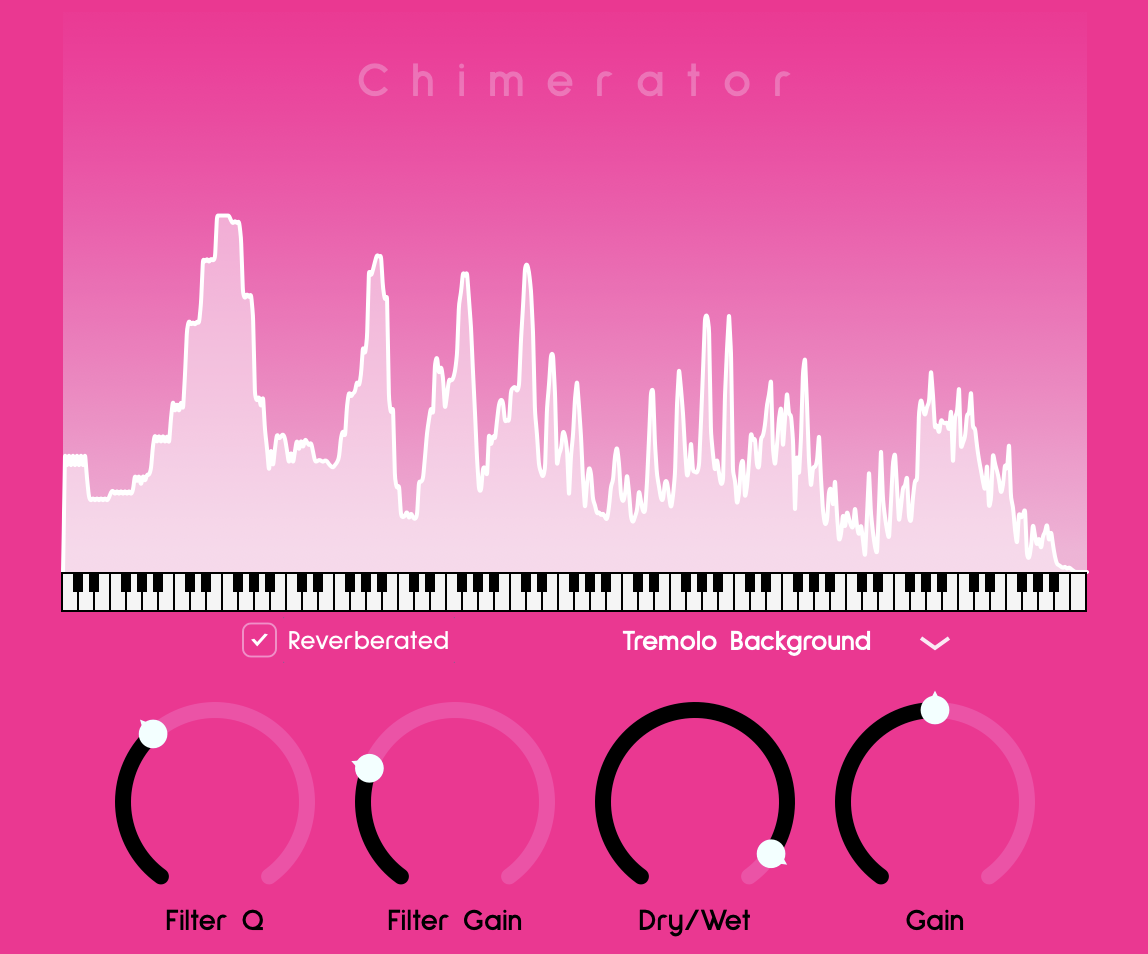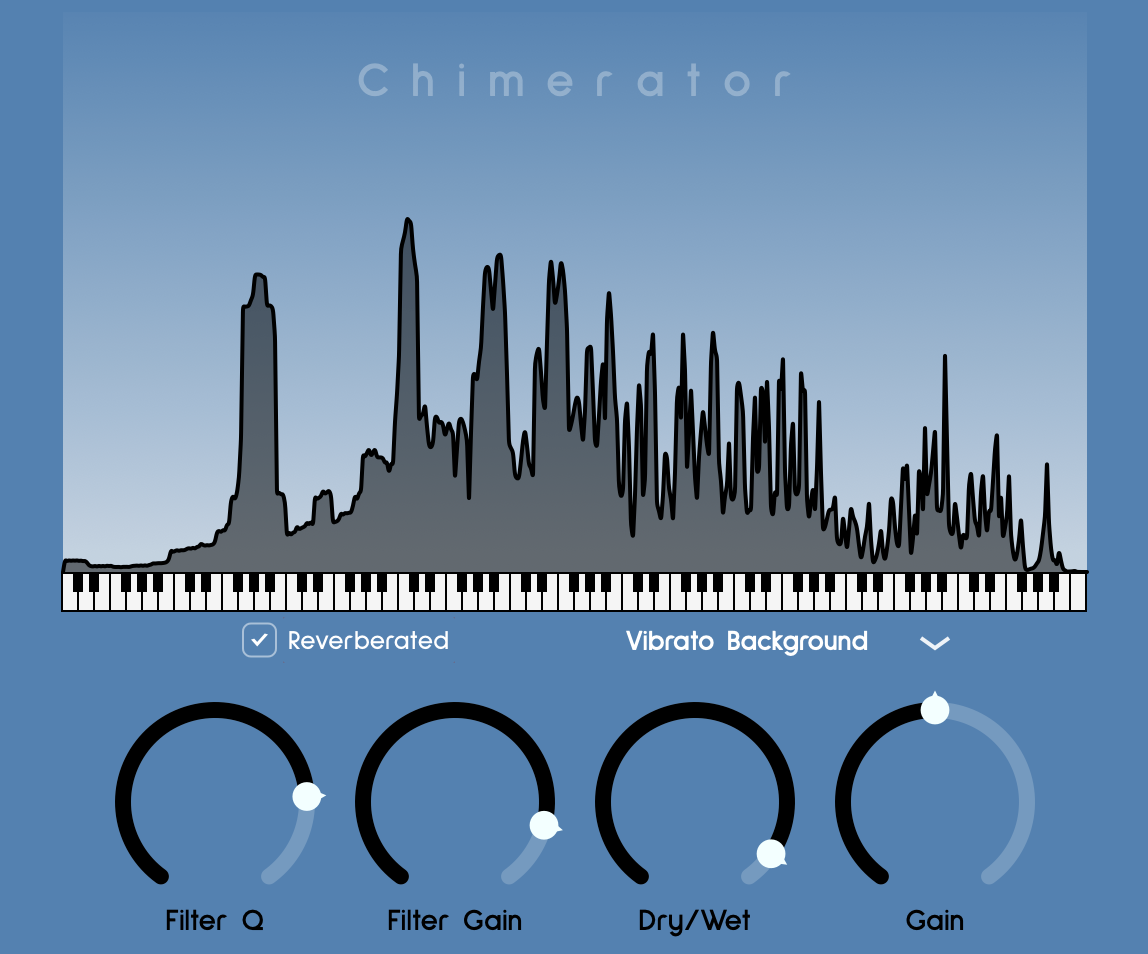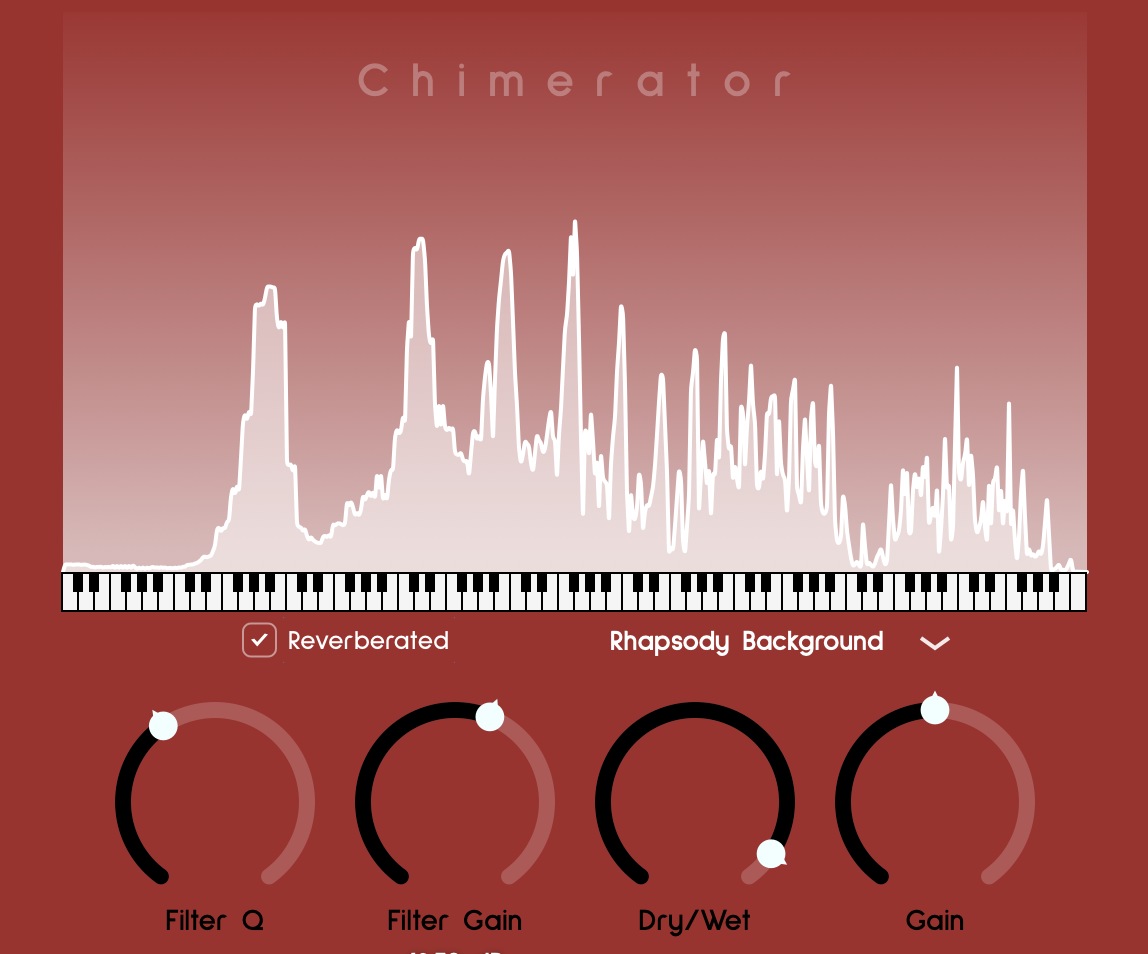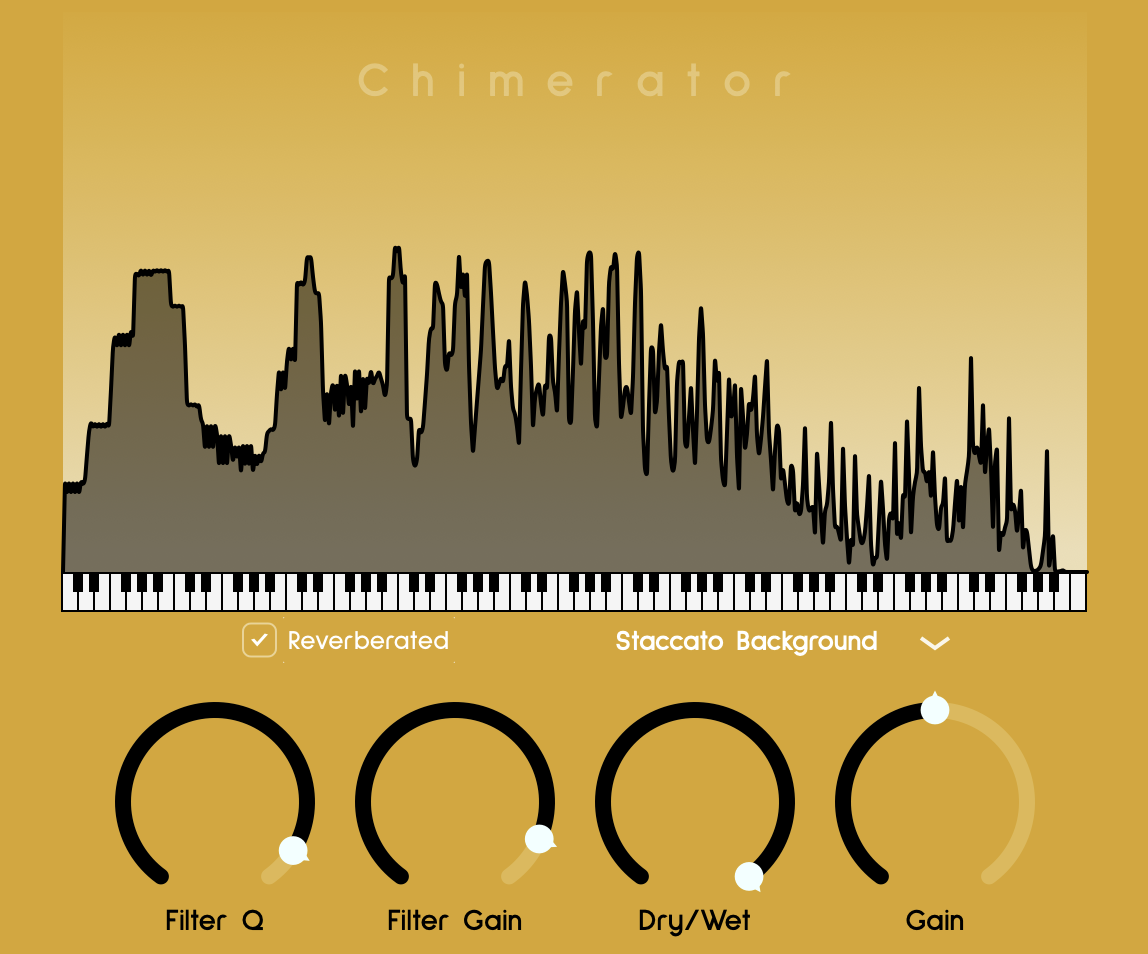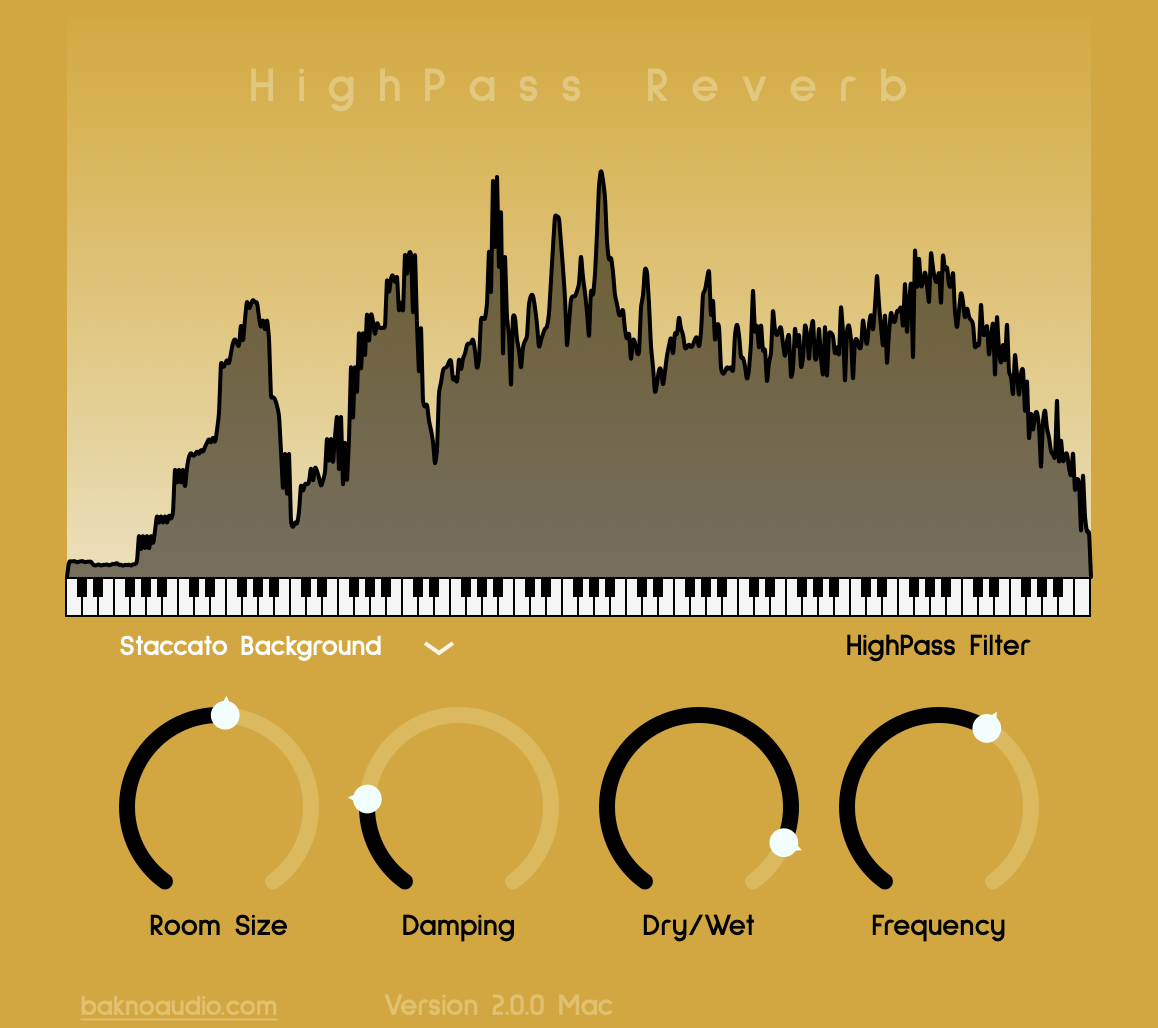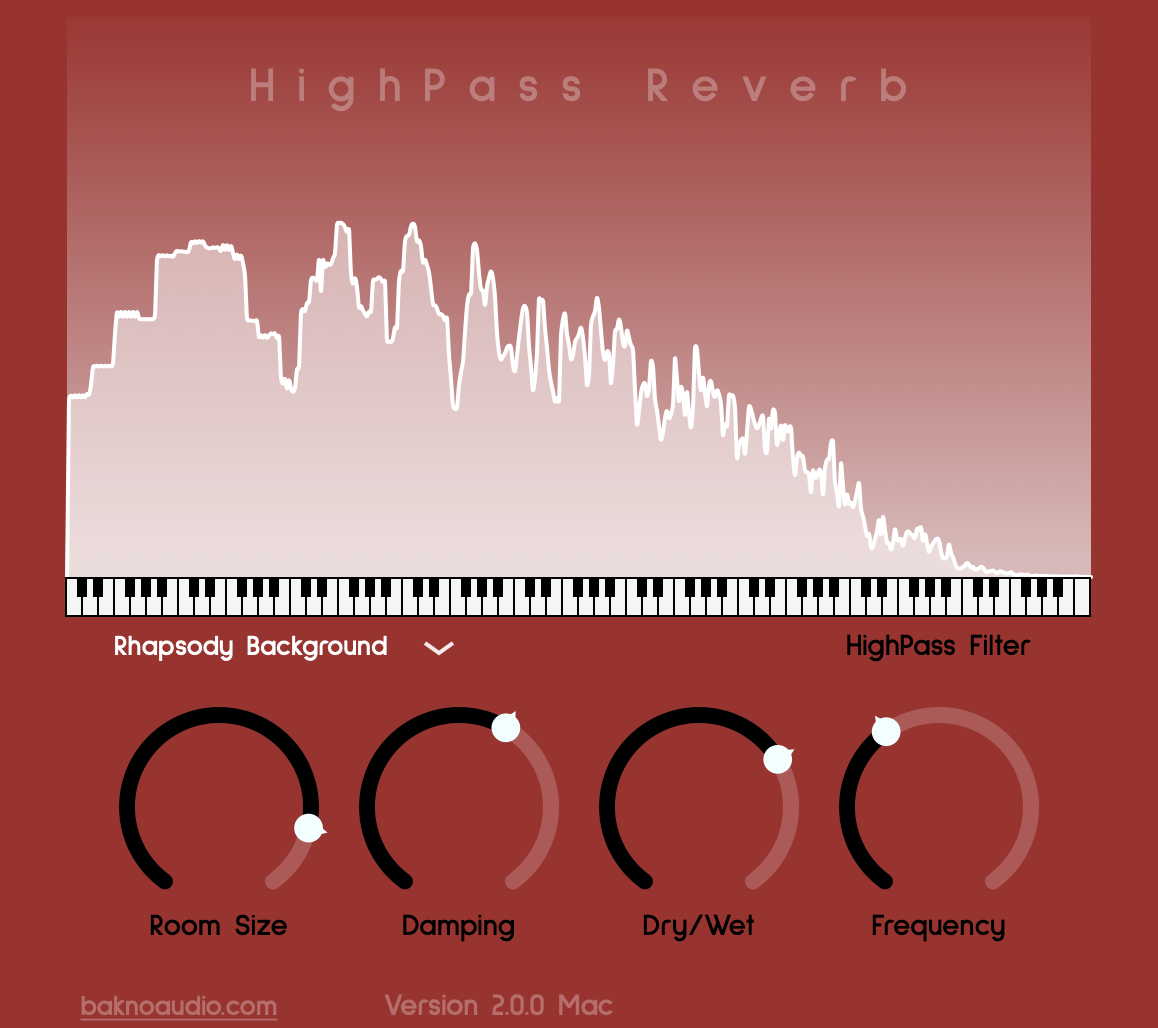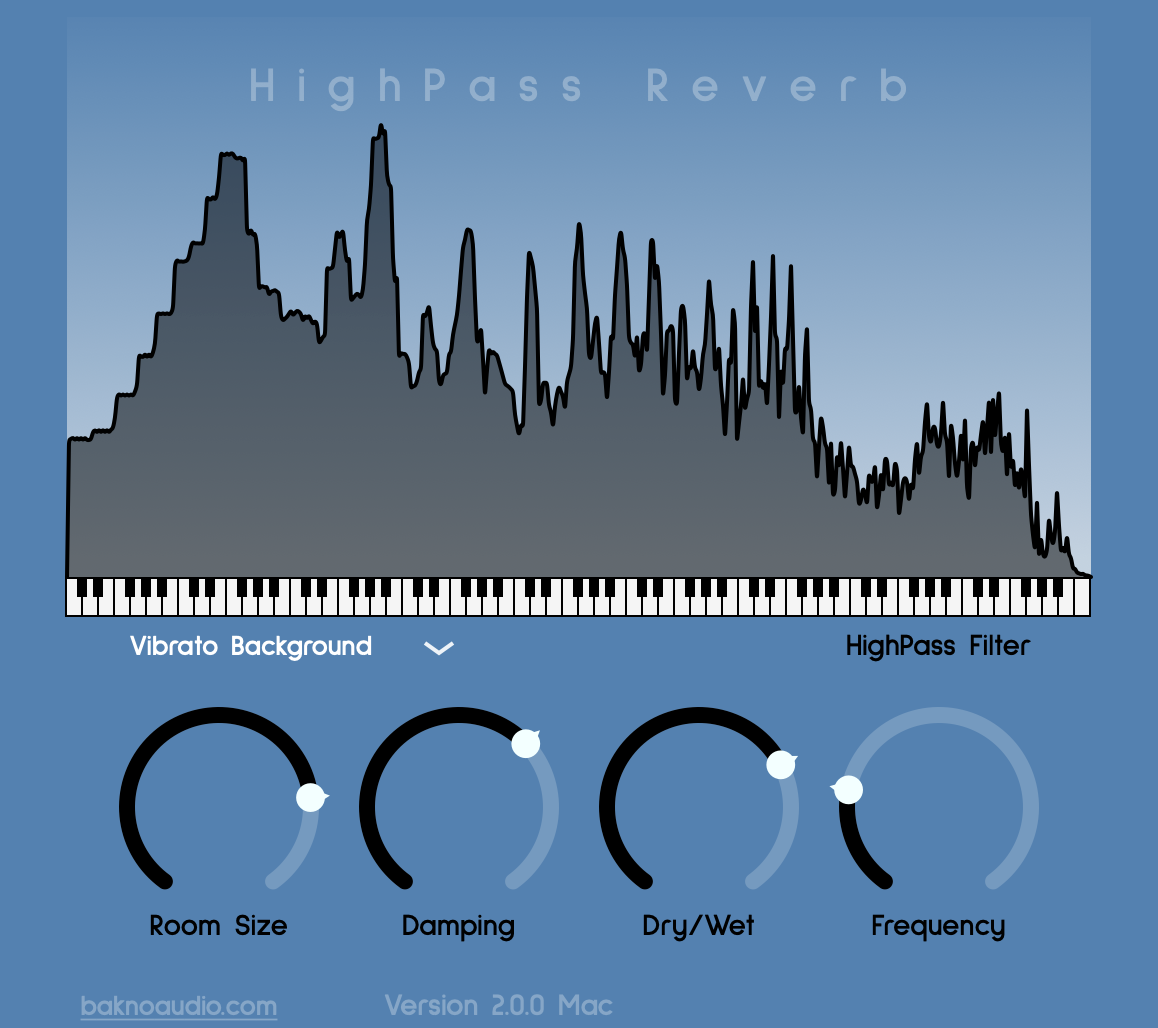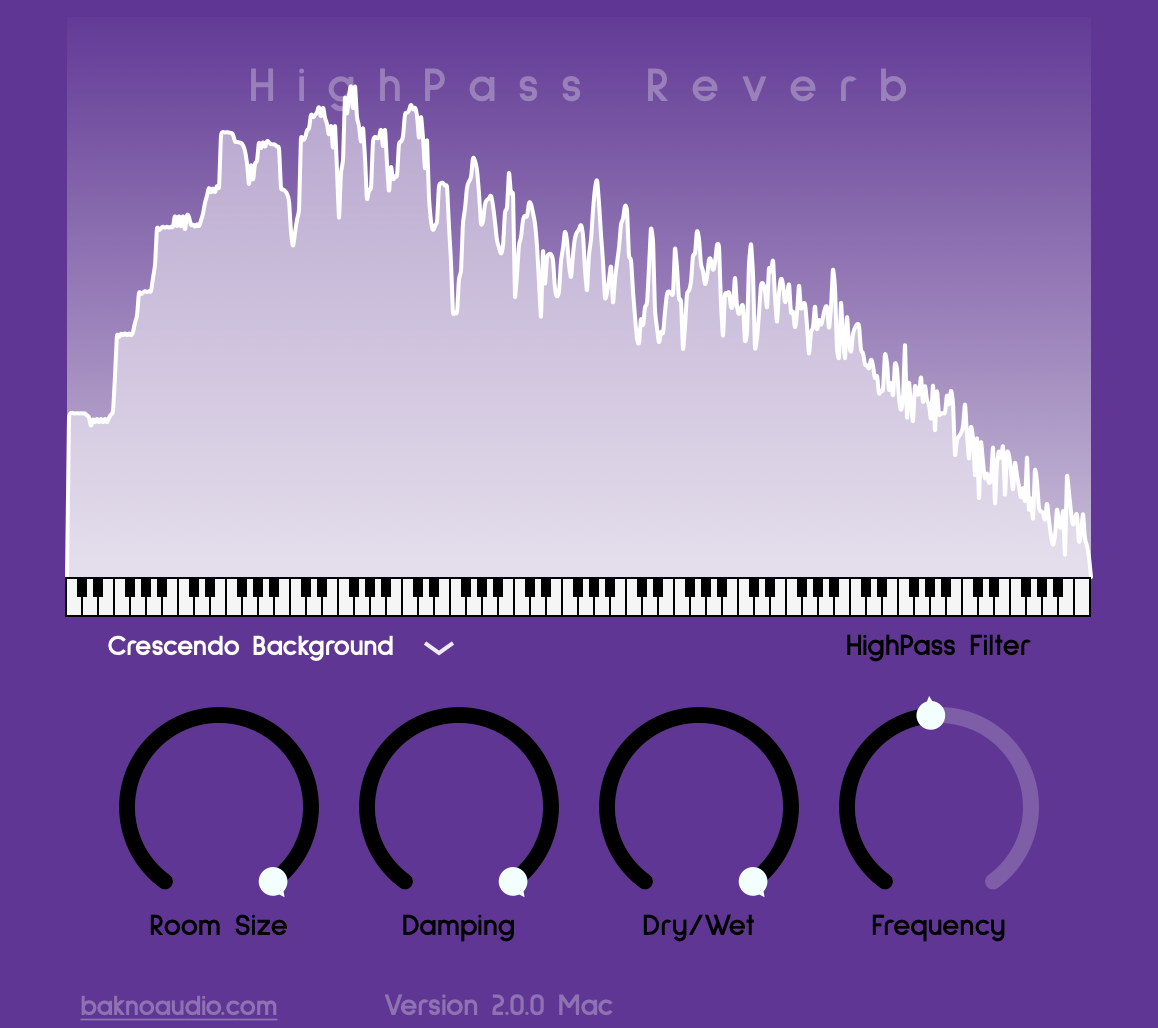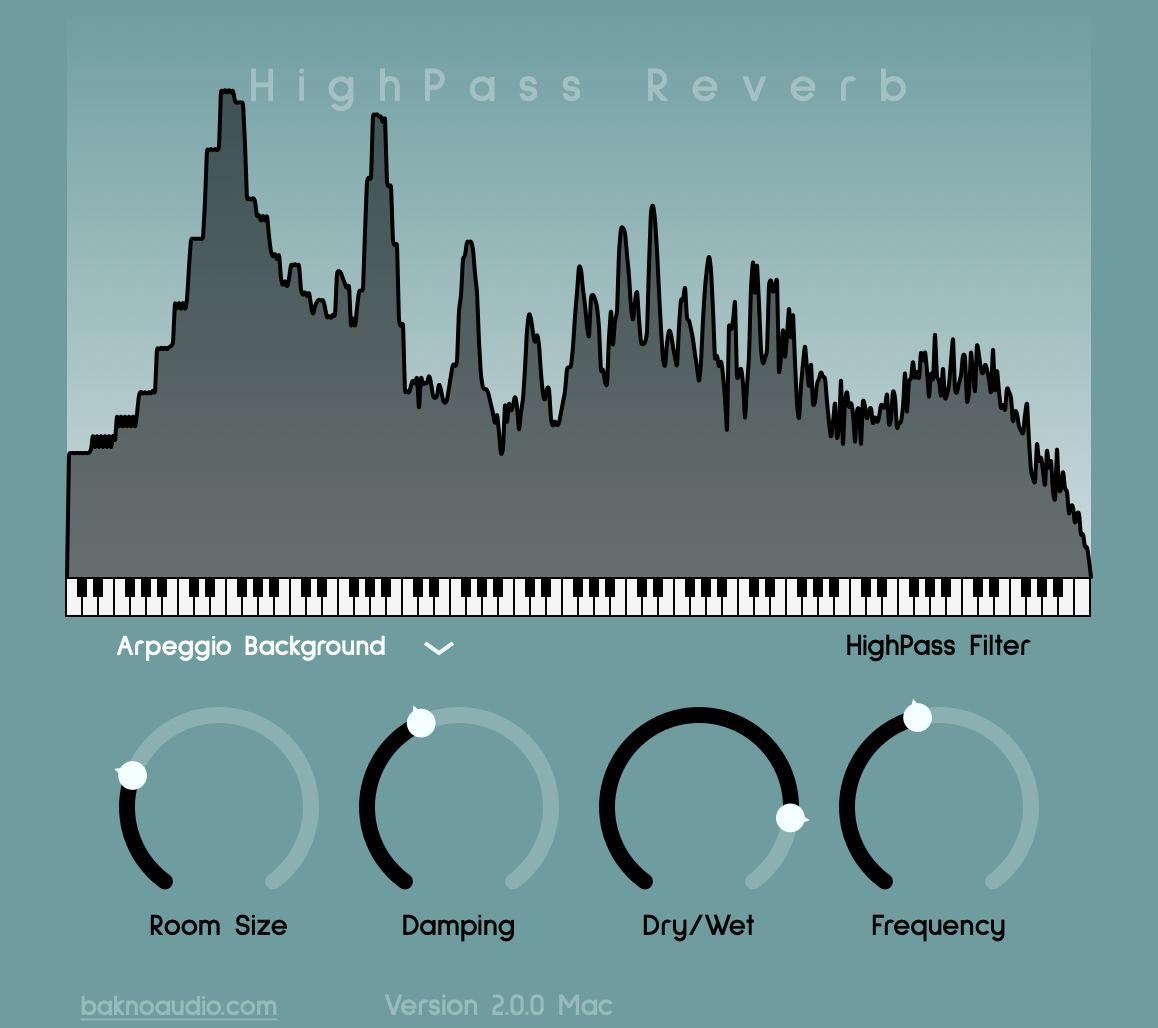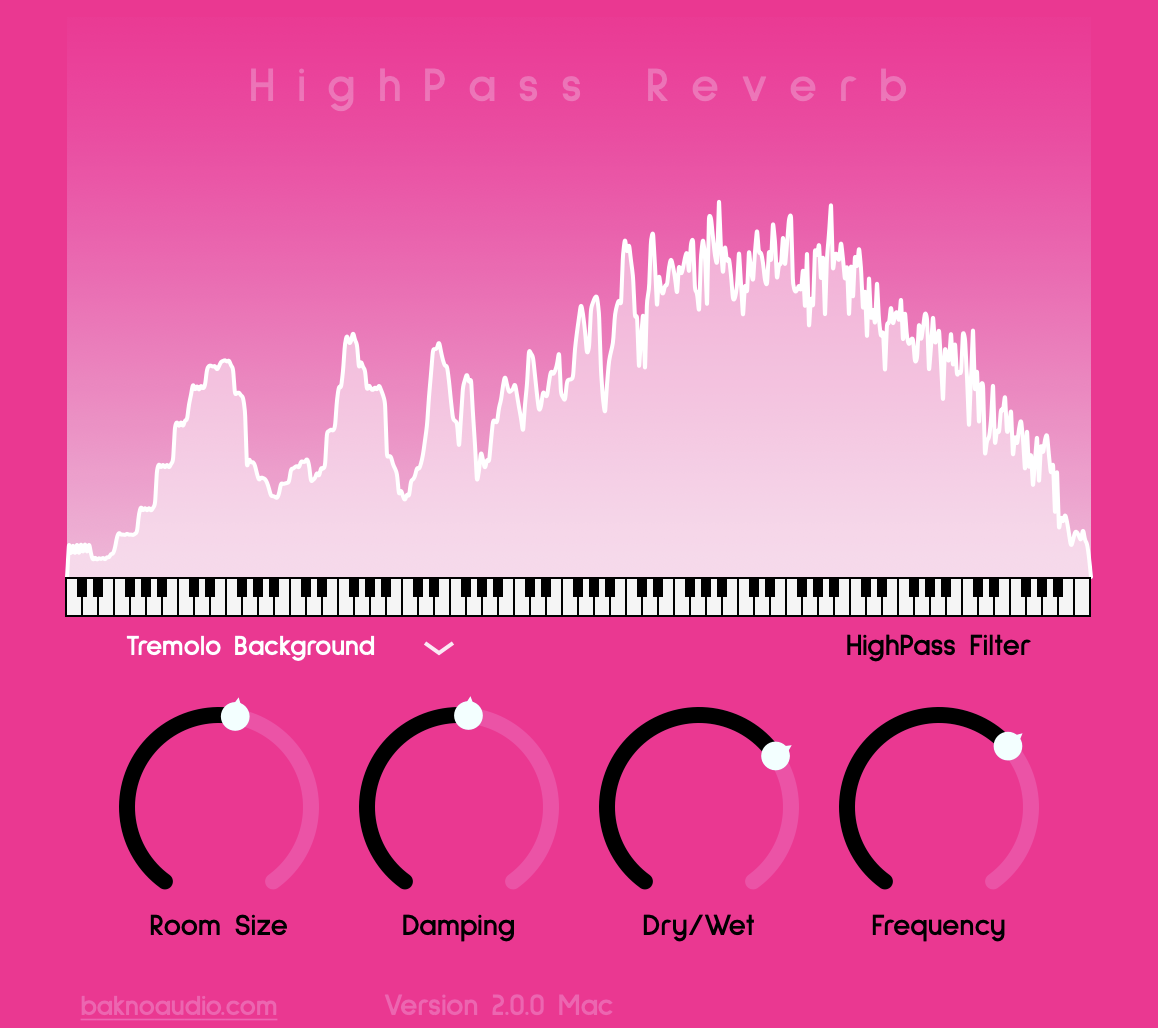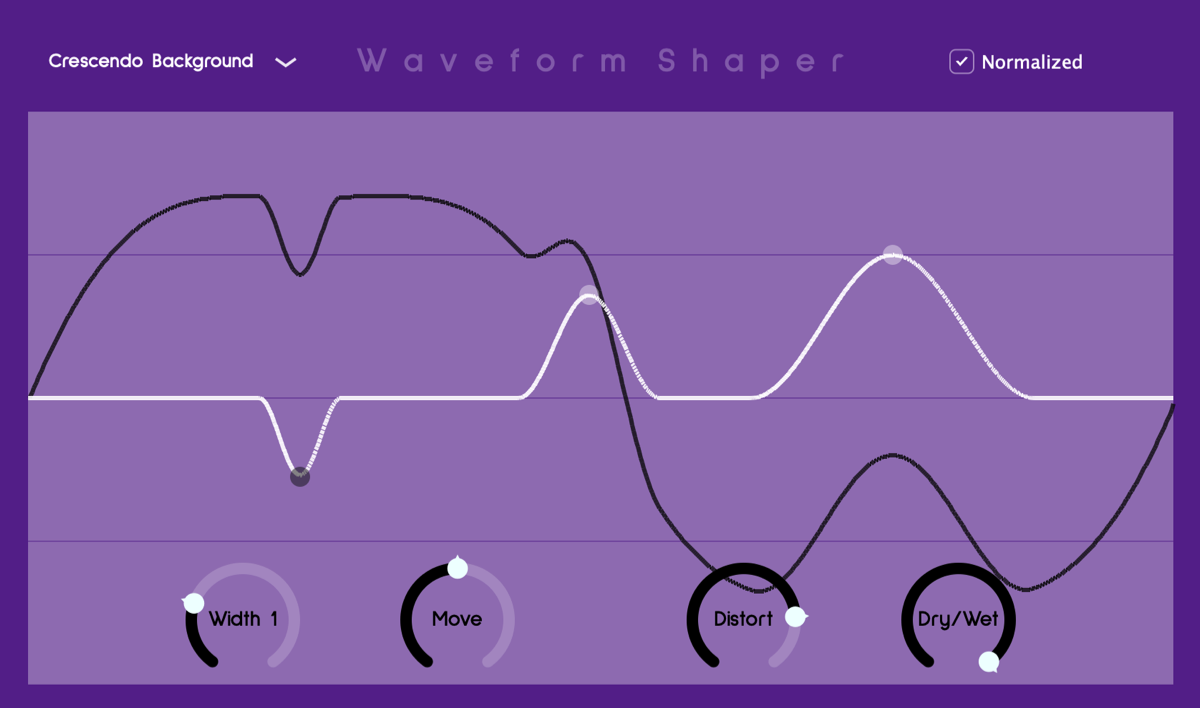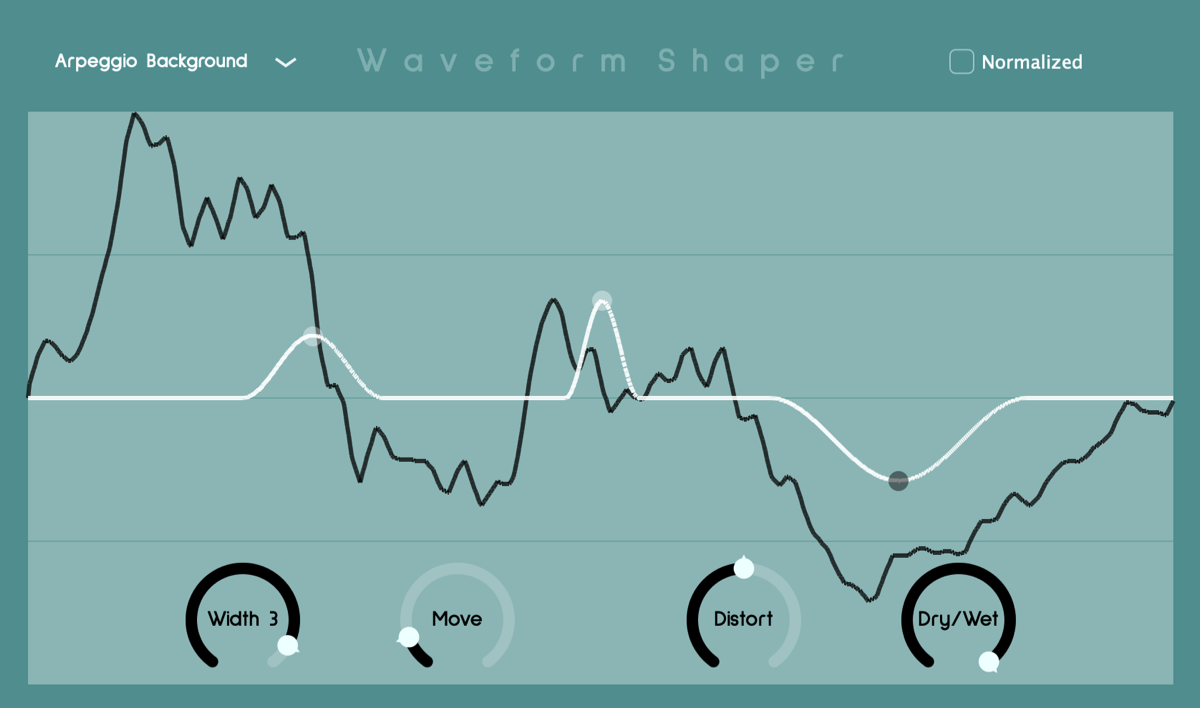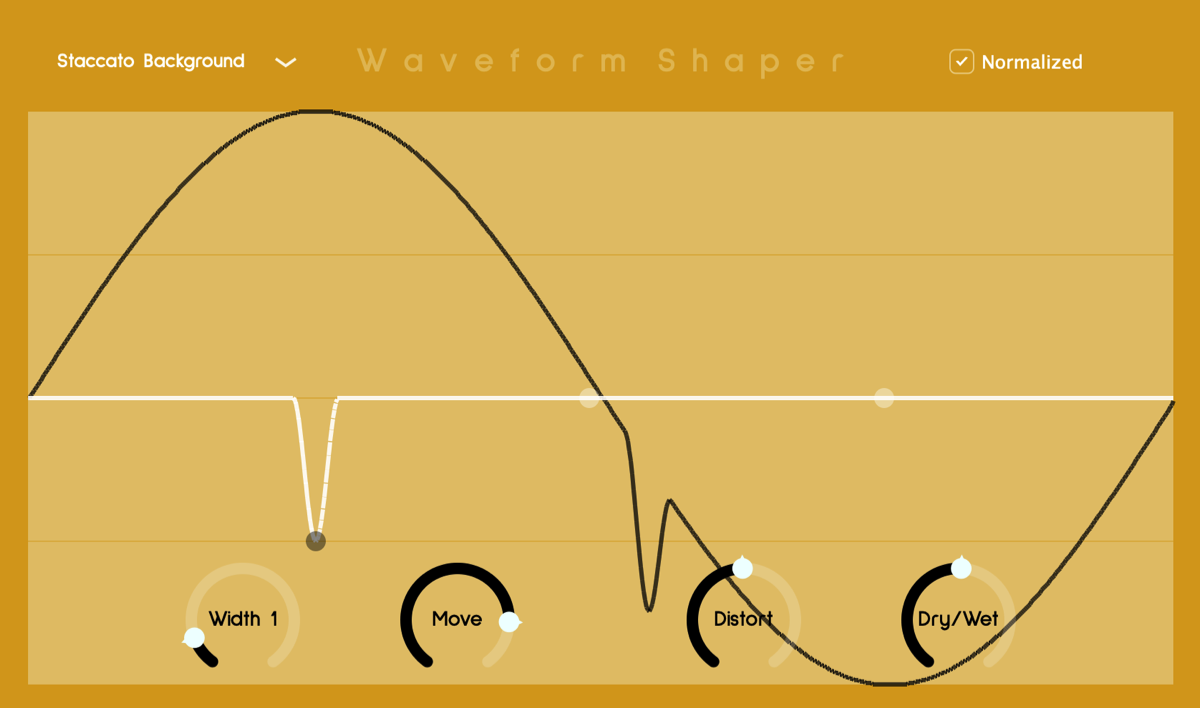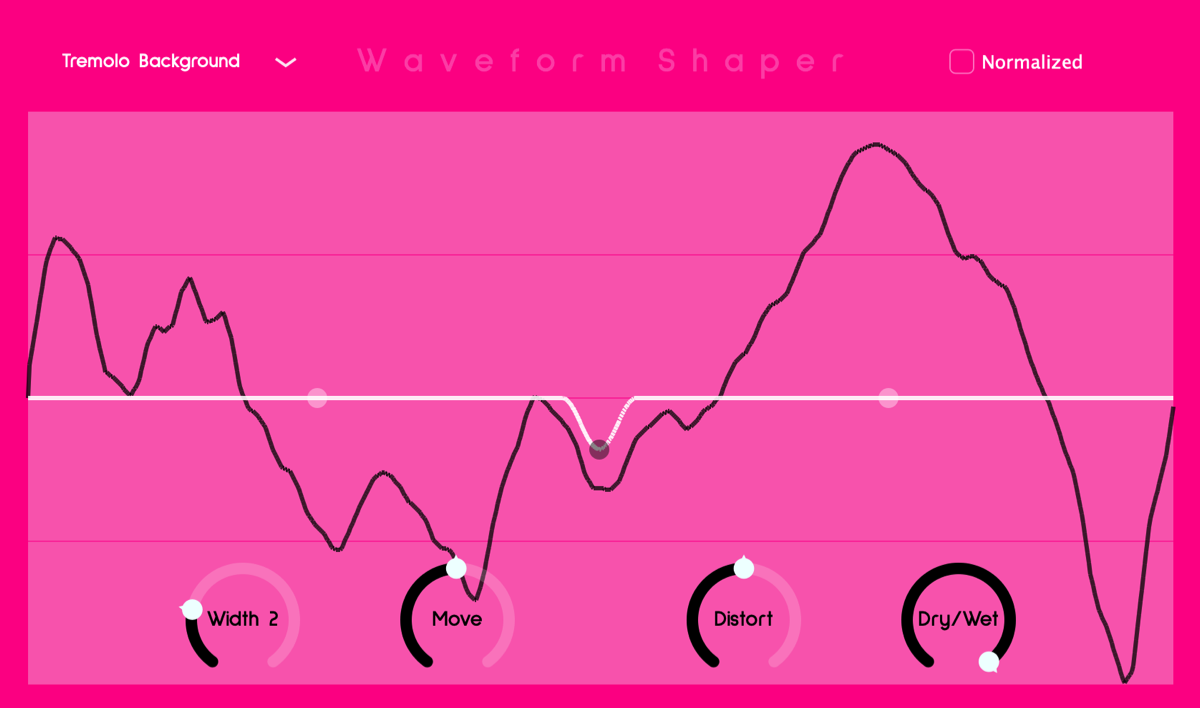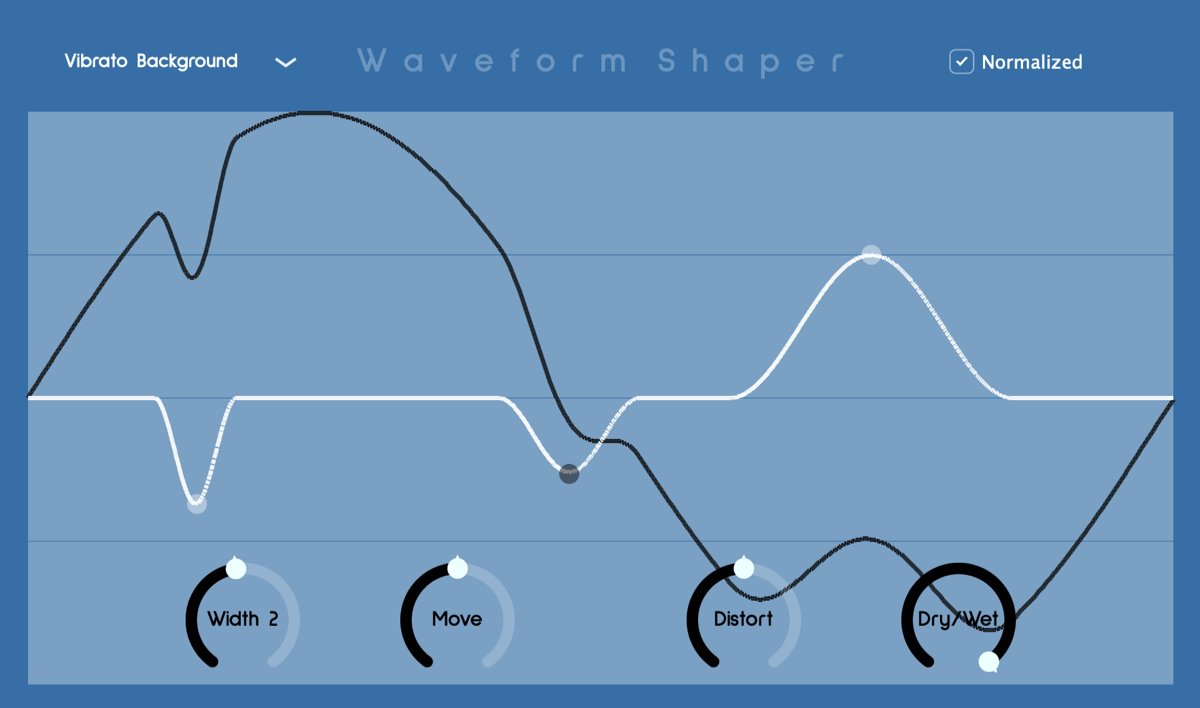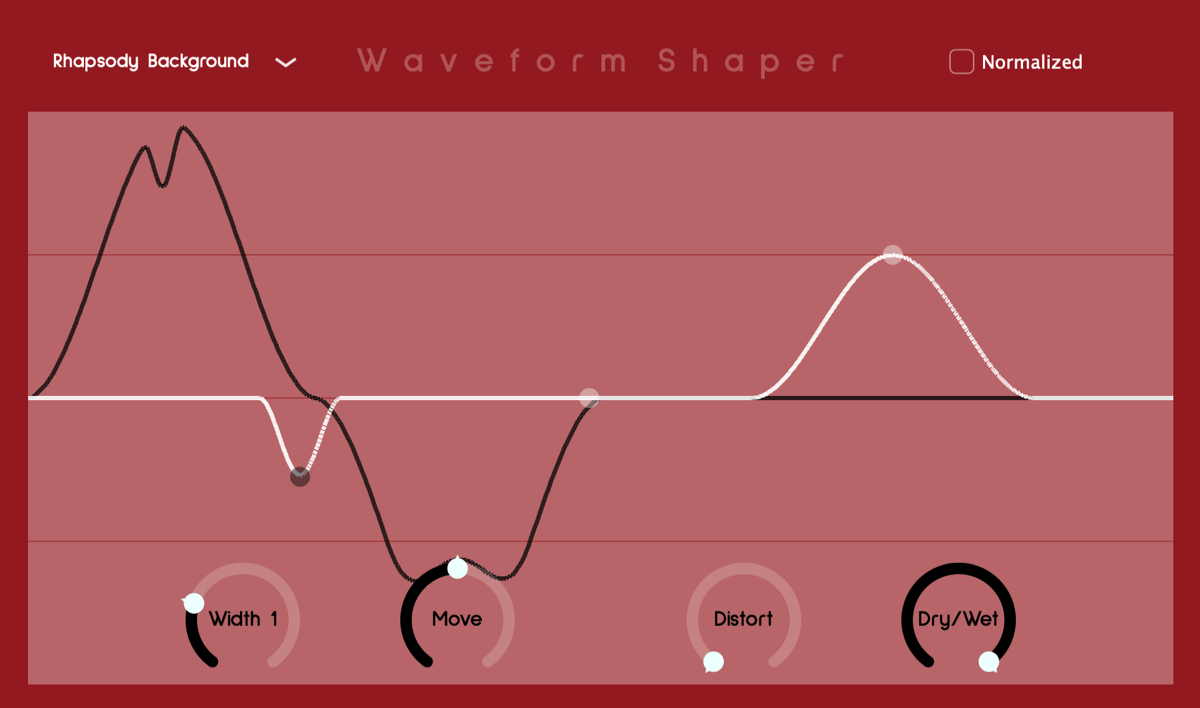Transparent Compressor
Dynamic Range Compression Audio Plugin for Mac or Windows. Visit the Transparent Compressor page to learn more. Download and try for free.
Chimerator
Vocal or Instrument Effect Audio Plugin for Mac or Windows. Visit the Chimerator page to learn more. Download and try for free.
HighPass Reverb
Reverb Effect Audio Plugin for Mac or Windows. Visit the HighPass Reverb page to learn more. Free license.
Waveform Shaper
Waveform Editor Audio Plugin for Mac or Windows. Visit the Waveform Shaper page to learn more. Free license.
About baKno Audio
baKno is a software development studio headquartered in Miami, FL since 2006. Our journey began with the creation of video games, which are sold through our website (www.baknogames.com) and various app stores. To date, we have launched more than 25 titles that operate on different platforms such as desktop, mobile, console, and VR. In 2018, we expanded our horizons by providing development services to other companies under the name baKno Apps (www.baknoapps.com).
Our passion for music production started with a band, inspiring us to create professional-sounding songs. After completing formal training in mixing and mastering, we discovered the fascinating world of sound engineering and set out to incorporate our creativity and simplicity into audio processing plugins.
Time Domain
Time domain audio analysis refers to the analysis and processing of audio signals in the time domain. In audio processing, signals are typically represented as a sequence of samples, where each sample represents the amplitude of the audio waveform at a particular point in time. Time domain analysis involves examining and manipulating these individual samples to extract information or apply various audio processing techniques.
Here are a few key aspects of time domain audio analysis:
Waveform visualization: Time domain analysis allows us to visualize the audio waveform, which represents the amplitude of the audio signal over time. By plotting the waveform, we can observe the variations in air pressure that create sound and gain insights into the characteristics of the audio.
Amplitude manipulation: Time domain techniques enable us to modify the amplitude of audio signals directly. For example, we can apply gain adjustments, amplify or attenuate specific portions of the waveform, or normalize the signal to a desired level.
Transient analysis: Transients are short-duration, high-amplitude events in an audio signal that contribute to its perceived attack and initial impact. Time domain analysis allows us to detect and manipulate these transients, which can be useful in applications like dynamic range compression or transient enhancement.
Time-based effects: Various audio effects and processing techniques, such as delay, echo, reverberation, and time stretching, rely on manipulating the audio signal in the time domain. These effects alter the timing and temporal characteristics of the audio, creating desired sonic results.
Envelope extraction: By analyzing the amplitude envelope of an audio signal in the time domain, it is possible to extract information about the overall shape and dynamics of the sound. This can be useful for tasks such as automatic gain control, envelope following, or detecting onsets in music analysis.
Time-domain filtering: Filtering operations can be performed directly in the time domain to modify the spectral content of the audio signal. Common examples include low-pass, high-pass, band-pass, or notch filters, which attenuate or emphasize certain frequency components.
While time domain analysis provides insights into the temporal characteristics of audio signals, it may not capture detailed frequency or spectral information.

Frequency Domain
The frequency domain refers to the different frequency components that make up a sound wave. Every sound wave is made up of a combination of different frequencies, and the frequency domain analysis allows us to break down the sound into its individual frequency components.
When we analyze music in the frequency domain, we are looking at the different frequencies that make up the sound. For example, a bass guitar might have a fundamental frequency of 50 Hz, while a piano might have a fundamental frequency of 440 Hz. By analyzing the frequency domain of a piece of music, we can gain insights into its timbre and harmony.
There are different tools and techniques used to analyze the frequency domain of music, including Fourier transforms, spectrograms, and frequency response plots. These methods allow us to visualize and understand the frequency content of a musical piece, and to manipulate and enhance it in different ways.
FFT (Fast Fourier Transform) is a mathematical technique used to transform a signal from the time domain into the frequency domain. The frequency domain is a representation of the signal that shows how much of each frequency is present in the original signal.
To generate a frequency response graphics, the FFT algorithm is typically used in combination with other digital signal processing elements. The frequency response graph obtained can be analyzed to identify the dominant frequencies in the signal, such as the fundamental frequency and its harmonics. It can also be used to identify any distortions or anomalies in the signal, which can then be corrected through equalization or other signal processing techniques. Frequency response graphics are commonly used in audio and music production to analyze and improve the quality of recordings.
Audio Compression
Dynamic compression is a technique used in audio engineering to even out the level of a recording, making it sound more consistent and polished. It is achieved by using a compressor, a device that reduces the level of loud sounds and amplifies quieter sounds, effectively "compressing" the dynamic range of the audio.
The basic principle of compression is to set a threshold level, above which the audio will be reduced in level, and a ratio, which determines by how much the audio will be reduced. For example, a ratio of 4:1 means that for every 4 dB over the threshold, the audio will be reduced by 1 dB. This allows the engineer to keep the loudest parts of the recording from being too overpowering, while still maintaining the integrity of the quieter parts.
There are a few different types of compression that can be used in audio engineering, each with their own unique characteristics and uses.
Peak compression, also known as peak limiting, is used to prevent clipping, which is when audio levels exceed the maximum level that can be recorded, causing distortion. This type of compression is typically used on the final mix to ensure that no part of the audio is too loud.

RMS compression, also known as level compression, is used to even out the overall level of a recording, making it sound more consistent. This type of compression is typically used during the mixing process to ensure that all parts of the audio are at a similar level, making it easier to hear all elements of the recording.
Downward compression, along with upward compression, is used to reduce the level of loud sounds and amplify quieter sounds, effectively "compressing" the dynamic range of the audio. This type of compression is typically used during the mastering process to ensure that the audio has a consistent level throughout, making it sound polished and professional. Transparent Compressor belongs to this group.
Dynamic compression is an essential tool in audio engineering, allowing engineers to make recordings sound more consistent and polished. It can be used in a variety of ways, from preventing clipping to even out the overall level of a recording, making it easier to hear all elements of the recording. With the right technique and settings, dynamic compression can make a huge difference in the overall sound quality of a recording.
Reverb Effect
Sound reverb effect refers to the acoustic phenomenon that occurs when sound waves bounce off surfaces in an enclosed space, creating a series of echoes that blend together and persist even after the original sound source has stopped. The result is a characteristic sense of space and depth that can be heard in many recordings and live performances.
In music production, sound engineers can use electronic devices and software to simulate the effect of reverb, allowing them to create a sense of space and ambiance for recorded tracks. This can help to make recorded music sound more natural and realistic, and to create a sense of spatial separation between different instruments and sounds in the mix.
Different types of reverb can be created by varying the parameters of the effect, such as the decay time (how long the reverb lasts), the pre-delay (the time between the original sound and the start of the reverb), and the high and low frequency damping (how much the reverb affects different frequency ranges). There are also different types of reverb algorithms, such as convolution reverb (which uses impulse responses of real spaces to simulate the effect) and algorithmic reverb (which uses mathematical models to simulate the effect). HighPass Reverb is an algorithmic reverb.
Overall, sound reverb is an important aspect of music production and sound design, and can greatly enhance the listener's experience of recorded music.

Distortion Effect
Distortion refers to any undesired alteration or modification of an audio signal that deviates from its original form. It occurs when the output waveform differs from the input waveform due to the introduction of additional harmonics or changes in the signal's shape. Distortion can occur in various stages of audio processing, including recording, playback, amplification, or effects processing.
There are different types of distortion that can occur in audio:
Harmonic distortion: This type of distortion introduces additional harmonics to the original audio signal. Harmonics are multiples of the fundamental frequency of a sound. When harmonic distortion occurs, new frequencies that are not present in the original signal are added, resulting in a change in timbre or tone. Common examples of harmonic distortion include overdriven guitar sounds or tube amplifier saturation.
Non-linear distortion: Non-linear distortion arises when the relationship between the input and output of a system is not linear. It can cause various types of distortion, such as amplitude distortion, phase distortion, or intermodulation distortion. Non-linear distortion often leads to the generation of unwanted frequencies and can result in audible artifacts, such as clipping, saturation, or fuzziness.
Frequency distortion: Frequency distortion refers to alterations in the frequency response of an audio signal. It can occur due to deficiencies in audio equipment, improper equalization, or filtering. Frequency distortion can result in imbalances in the frequency spectrum, leading to changes in tonal quality or timbre of the sound.
Time-based distortion: Time-based distortion occurs when the temporal characteristics of the audio signal are altered. It can manifest as delays, echoes, reverberation, or other time-based effects. While these effects are intentional in certain contexts, excessive or unintended time-based distortion can degrade the clarity and intelligibility of the audio.
Distortion can be both intentional, as in the case of certain musical effects like overdrive or distortion pedals, or unintentional, resulting from technical limitations, poor signal quality, or improper equipment operation. In some cases, distortion may be perceived as desirable and contribute to the character or aesthetic of the audio, while in other cases, it is considered undesirable and should be minimized or eliminated to maintain audio fidelity.
Frequently Asked Questions?
Q. What are the limitations of the Trial version?
A. In trial mode, Transparent Compressor works intermittently at 10 seconds intervals. You can use this to check the difference between the plugin working and not working. Just modify the output gain until there is no difference in volume.
Q. Can I unlock the plugin on multiple computers?
A. Each license is limited to a single computer. If you wish to use Transparent Compressor on a second computer, you will need to purchase a second license. If you need to transfer your license to a different computer, simply contact us via email and we will reset your registration.
Q. Does the background selection do anything to the sound?
A. This selector is purely cosmetic. It can be helpful to have a visual aid when using the plugin on multiple tracks simultaneously, or just for the sake of enjoyment.
Q. What are the improvements in Version 2.0.0?
A. Version 2.0.0 for Chimerator and Transparent compressor fixes an important bug, where the plugins were not able to load pre-saved parameters when the project was opened and the plugin was not.
Q. What is the purpose of the keyboard keys below the frequencies visualizer?
A. The piano roll is just a visual aid to have an idea of the frequencies. Instead of using a grid and numbers along the visualizer.
Q. What is new in Version 2.5.0?
A. Code was vastly optimized. But most importantly, the licensing scheme was changed and prices reduced. Now, there is an intermediate free basic license. With this license you can enjoy the basic features of all plugins, more details on the licensing options section on each plugin.
Need Support?
If you have any inquiries, please do not hesitate to reach out to us by emailing info@baknoaudio.com. We will make sure to respond to your message as promptly as possible.
© baKno 2023. All rights reserved.

